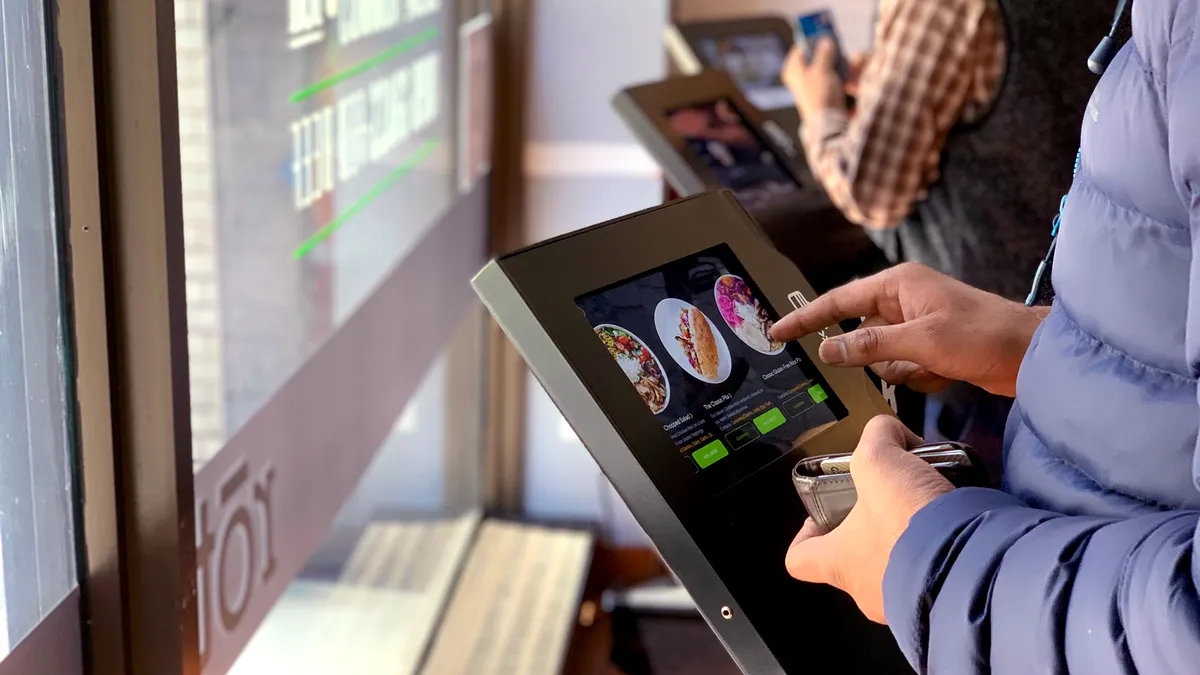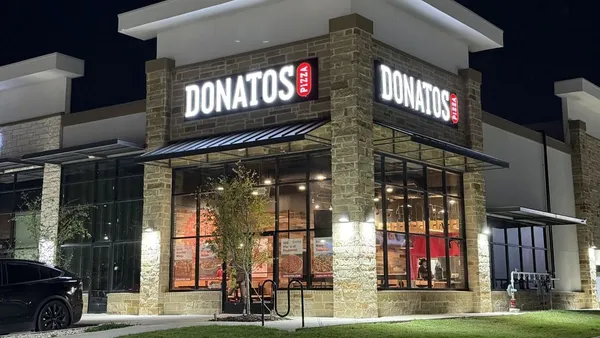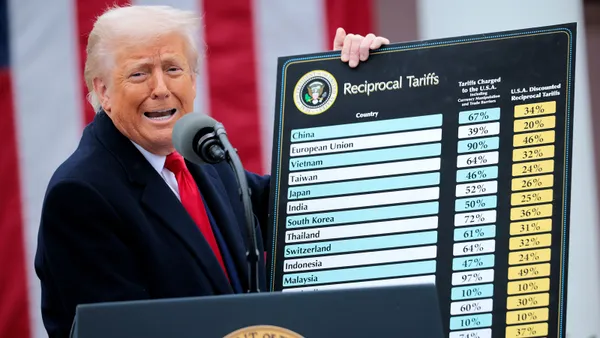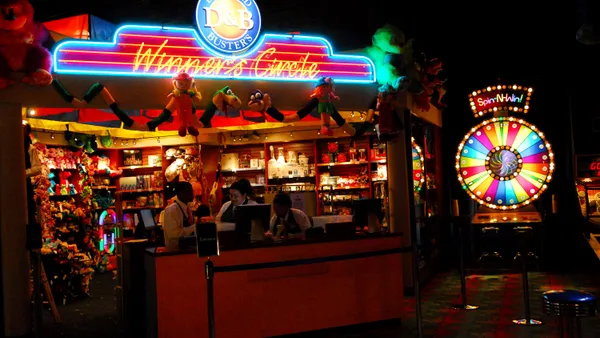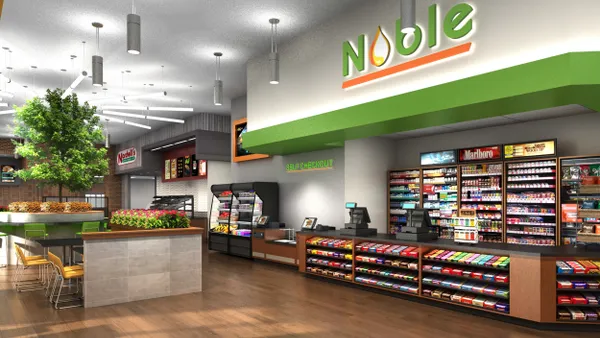Dive Brief:
- The self-service kiosk market will reach an estimated $30.8 billion by 2024, according to new research from Tillster, which surveyed 2,000 QSR and fast casual customers with the help of SSI.
- Even if lines were equal length, 30% of customers said they would prefer to order from a kiosks. When line length has more than four people, a majority of customers would prefer to use kiosks.
- Customers of all ages said they would visit a QSR or fast casual more if a kiosk was offered.
Dive Insight:
Self-order kiosks are making an increasing appearance at QSR restaurants as different retailers look for ways to provide consumers with a tech-driven experience. Panera Bread was one of the first restaurants to offer kiosks, citing labor savings as one of the drivers, as well as encouraging menu browsing, shorter lines and better order accuracy.
McDonald's is delving deep into self-order kiosks as part of its Experience of the Future remodels. Pilot tests of the kiosks in 2016 resulted in increased foot traffic as well as a slight increase in sales. Customers seemed more pleased with the experience, although it may partly because an employee brought them their food. Overall, the brand is investing heavily on technology, recently spending $300 million to purchase app developer Dynamic Yield in addition to its $6 billion investment in the tech-centric remodels.
Shake Shack plans to revisiting the tech with its new CMO Jay Livingston, who is tasked to provide personalized guest experiences through digital channels, including kiosks. Subway is in the midst of a brandwide revamp and is also adding kiosks to the menu of tech tools that it hopes to include in its new store concepts, while Taco Bell is aiming to install self-order kiosks in all of its restaurants by the end of 2019. Sonic Drive-In, one of the longest users of self-order technology, is now tapping AI technology to give its giant digital menus a boost.
There are still a few kinks to work out for self-order kiosks, however, and some consumers may never prefer a human-less customer service experience. The software that powers the technology will need to be user-friendly and bug-free if consumers are going to adopt the concept. The system also has to integrate flawlessly with the restaurant and can't cause regular order traffic at the counter to get backlogged.
And when designing the user interface, restaurants should keep in mind who will be using the technology. In most cases, the restaurant will still need to have a staff member on hand who can take orders from people unfamiliar with the technology or if an error occurs.
While kiosks are becoming a more common sight at QSRs and even the fast casual space, the verdict is still out on whether the technology will provide the value proposition that some have touted. The upside is that the machines are good at collecting data and will soon reveal whether consumers are ready for futuristic ordering.


